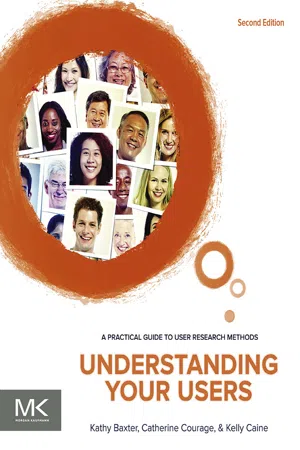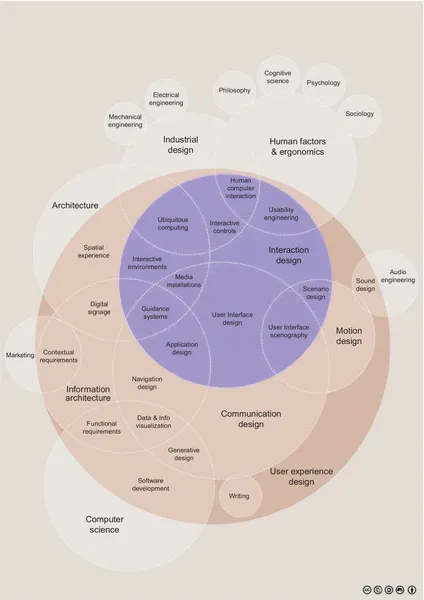
Understanding Your Users
A Practical Guide to User Research Methods
- 568 pages
- English
- ePUB (mobile friendly)
- Available on iOS & Android
Understanding Your Users
A Practical Guide to User Research Methods
About this book
This new and completely updated edition is a comprehensive, easy-to-read, "how-to" guide on user research methods. You'll learn about many distinct user research methods and also pre- and post-method considerations such as recruiting, facilitating activities or moderating, negotiating with product developments teams/customers, and getting your results incorporated into the product. For each method, you'll understand how to prepare for and conduct the activity, as well as analyze and present the data - all in a practical and hands-on way.Each method presented provides different information about the users and their requirements (e.g., functional requirements, information architecture). The techniques can be used together to form a complete picture of the users' needs or they can be used separately throughout the product development lifecycle to address specific product questions. These techniques have helped product teams understand the value of user experience research by providing insight into how users behave and what they need to be successful. You will find brand new case studies from leaders in industry and academia that demonstrate each method in action.This book has something to offer whether you are new to user experience or a seasoned UX professional. After reading this book, you'll be able to choose the right user research method for your research question and conduct a user research study. Then, you will be able to apply your findings to your own products.- Completely new and revised edition includes 30+% new content!- Discover the foundation you need to prepare for any user research activity and ensure that the results are incorporated into your products- Includes all new case studies for each method from leaders in industry and academia
Frequently asked questions
- Essential is ideal for learners and professionals who enjoy exploring a wide range of subjects. Access the Essential Library with 800,000+ trusted titles and best-sellers across business, personal growth, and the humanities. Includes unlimited reading time and Standard Read Aloud voice.
- Complete: Perfect for advanced learners and researchers needing full, unrestricted access. Unlock 1.4M+ books across hundreds of subjects, including academic and specialized titles. The Complete Plan also includes advanced features like Premium Read Aloud and Research Assistant.
Please note we cannot support devices running on iOS 13 and Android 7 or earlier. Learn more about using the app.
Information
Introduction to User Experience
What Is User Experience?
Who Does User Experience?

User-Centered Design
Table of contents
- Cover image
- Title page
- Table of Contents
- Copyright
- In Praise of Understanding Your Users, Second Edition
- Preface
- About the Authors
- Acknowledgments
- Part 1: What You Need to Know Before Choosing an Activity
- Part 2: Get up and Running
- Part 3: The Methods
- Part 4: Wrapping up
- Appendix A: Requirements for Creating a Participant Recruitment Database
- Appendix B: Report Template
- Appendix C: Glossary
- Appendix D: References
- Index